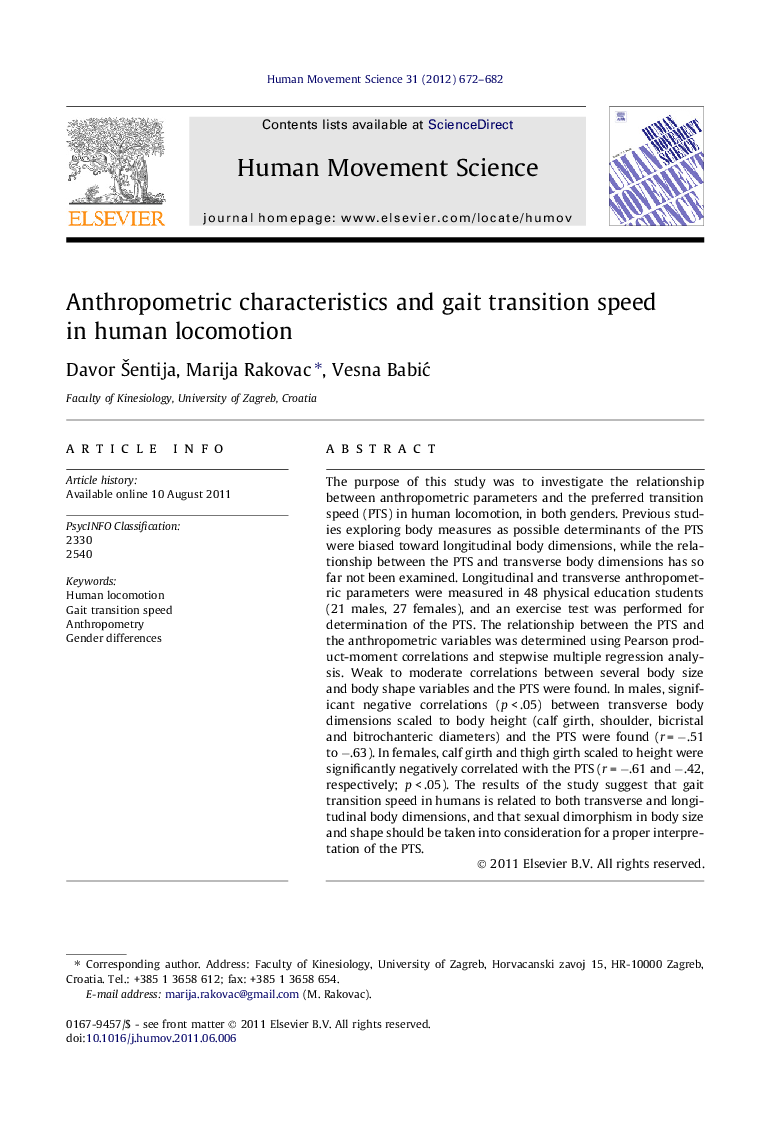| Article ID | Journal | Published Year | Pages | File Type |
|---|---|---|---|---|
| 928452 | Human Movement Science | 2012 | 11 Pages |
The purpose of this study was to investigate the relationship between anthropometric parameters and the preferred transition speed (PTS) in human locomotion, in both genders. Previous studies exploring body measures as possible determinants of the PTS were biased toward longitudinal body dimensions, while the relationship between the PTS and transverse body dimensions has so far not been examined. Longitudinal and transverse anthropometric parameters were measured in 48 physical education students (21 males, 27 females), and an exercise test was performed for determination of the PTS. The relationship between the PTS and the anthropometric variables was determined using Pearson product-moment correlations and stepwise multiple regression analysis. Weak to moderate correlations between several body size and body shape variables and the PTS were found. In males, significant negative correlations (p < .05) between transverse body dimensions scaled to body height (calf girth, shoulder, bicristal and bitrochanteric diameters) and the PTS were found (r = −.51 to −.63). In females, calf girth and thigh girth scaled to height were significantly negatively correlated with the PTS (r = −.61 and −.42, respectively; p < .05). The results of the study suggest that gait transition speed in humans is related to both transverse and longitudinal body dimensions, and that sexual dimorphism in body size and shape should be taken into consideration for a proper interpretation of the PTS.
► We explore anthropometric traits and preferred transition speed in humans by gender. ► The novel approach is inclusion of transverse body dimensions. ► Both transverse and longitudinal body dimensions are related to gait transition speed. ► Sexual dimorphism in body size and shape appears to influence gait transition speed.
